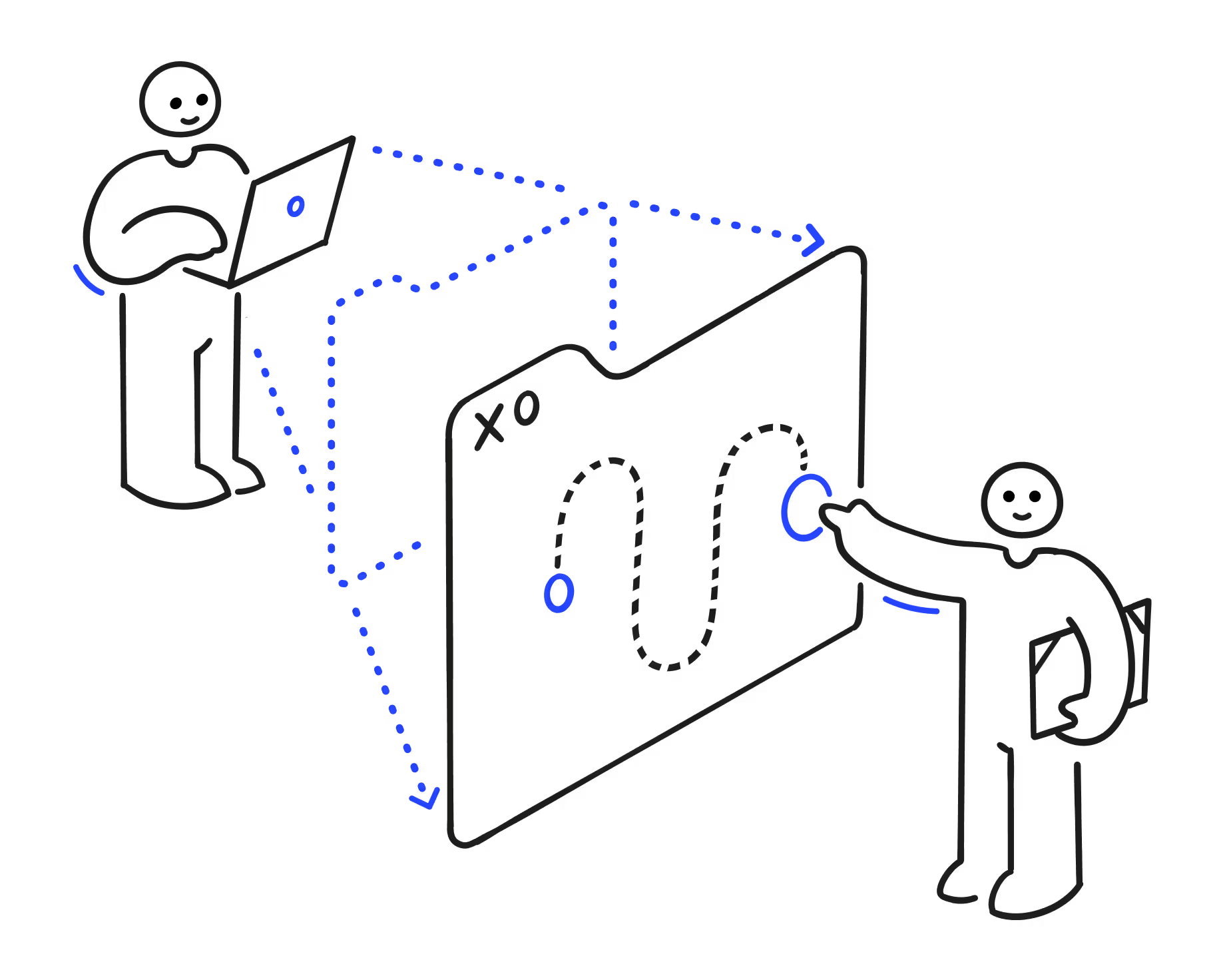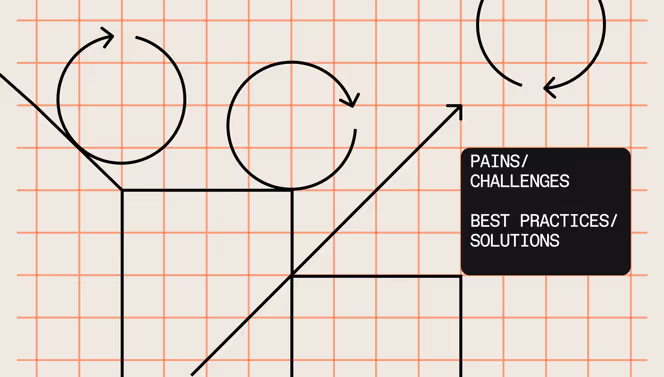The best software for performance management in 2025

Discover Workleap Officevibe's benchmark report on 12 key employee engagement metrics

Keeping employees motivated, aligned, and productive isn’t easy, especially as teams grow and priorities shift. That’s where performance management software comes in.
These tools not only track performance reviews but also help managers set clear goals, provide real-time feedback, and support employee growth in a way that drives business impact.
Let’s explore what makes a great performance management system, highlight the best software options available today, and show how to implement them effectively.
What’s a performance management system?
A performance management system (PMS) is a structured solution for setting goals, tracking progress, and driving continuous improvement within an organization. Unlike annual reviews that examine the past, a modern PMS emphasizes real-time feedback, employee development, and productivity.
Key features of PMS tools include:
- Goal setting and OKRs: Objectives and key results (OKRs) help you align employee objectives with company goals.
- Continuous feedback: Replacing annual reviews with frequent check-ins is a great way to build momentum.
- 360° reviews: Workleap’s 360° review feature is a continuous performance review solution that helps you capture self-assessments, plus feedback from peers, managers, and direct reports.
- Performance dashboards: Performance dashboards provide real-time insights into employee engagement and productivity.
- Integration with workflows: Good software for performance management integrates with project management platforms and collaboration tools like Slack or Teams to make sure everyone stays in the loop.
- Data-driven insights: Analytics give you real-time visibility into performance gaps and opportunities.
A good PMS has five major benefits for small businesses and fast-growing teams:
- Stronger alignment between employees and business goals
- Earlier detection of skills gaps and growth opportunities
- Increased productivity through clarity and accountability
- Higher employee engagement and retention
- Time savings for managers via automation
What’s the best software for employee performance management?
The right PMS for your organization depends on your goals, size, and how much support your managers really need.
To help you cut through the noise, here’s a roundup of 10 tools that make performance management easier.
1. Workleap Performance
Workleap Performance brings structure, speed, and clarity to performance management. The review cycle builder feature gives HR full control to create custom assessments that align with team goals, while built-in nudges and performance rating analytics keep everyone on track and in sync.
Workleap is the go-to solution for teams looking to standardize processes, improve communication, and spot performance gaps early, so managers can act before issues escalate.
2. Engagedly
Engagedly is a talent management platform that combines recognition tools, OKR tracking, and a learning management system. It leans heavily on gamification and AI to support employee growth through structured feedback and development paths.
While Engagedly is feature-rich, its focus on multiple HR functions can dilute its impact as a performance tool. For teams that want a streamlined, manager-friendly approach to reviews and feedback, it may feel more distracting than empowering.
3. 15Five
15Five offers lightweight tools like weekly check-ins, High Fives for peer recognition, engagement surveys, and OKRs. It’s designed to encourage ongoing feedback and boost morale, but its simplicity can come at the cost of structure and deeper performance insights.
While this solution is a fit for companies focused on keeping conversations flowing, teams needing robust review cycles or strategic visibility may find it limiting.
4. Leapsome
Leapsome is an AI-powered HR platform that blends OKR tracking, automated review insights, engagement surveys, and learning tools. While it covers multiple areas of performance and development, its broad scope can make it harder for teams to drive focused, actionable outcomes.
Leapsome may suit organizations investing heavily in structured L&D frameworks. But for HR teams looking for simplicity, flexibility, and manager-first workflows, the experience may feel overwhelming or rigid.
5. Reflektive
Reflektive is a people management suite focused on instant feedback, check-ins, and performance analytics. It includes tools for performance and talent recalibration, but the experience is built primarily around feedback exchange instead of full-cycle performance management.
Reflektive may work well for feedback-first cultures, but teams looking for structured review processes, AI support, or manager enablement may find its capabilities limited.
6. PerformYard
PerformYard is an AI-powered performance management platform with customizable feedback formats, goal tracking, and reporting dashboards. While it offers flexibility, the setup time and ongoing admin can be pretty demanding, especially for smaller HR teams.
PerformYard may appeal to organizations with highly specific review processes, but for teams that value speed, simplicity, and manager adoption, it might feel overly complex.
7. Betterworks
Betterworks is a continuous performance management platform that focuses on OKR alignment, 1:1 conversation templates, and customizable calibration tools to connect employee goals to company strategy.
Betterworks may work well for large, OKR-driven organizations with mature processes, but it’s less suitable for small or mid-sized businesses looking for agile, easy-to-adopt performance tools.
8. Lattice
Lattice is an HR platform with features like career development planning, analytics, and HRIS integrations. It’s built to scale, but its depth and configuration options may create friction for teams that need quick wins and intuitive workflows.
Lattice tends to work best for enterprise organizations that are planning long-term process automation. It’s less ideal for fast-growing businesses that prioritize flexibility, speed, and adoption.
9. Paycor
Paycor (formerly 7Geese) combines performance reviews, goal tracking, and recognition with core HR and payroll features. While it offers an all-in-one experience, the platform leans more toward operational HR than people development.
Paycor may work for companies with larger budgets looking to centralize HR tasks, but it lacks the flexibility and manager-first design that growing teams need to drive real performance outcomes.
10. Deel
Deel is known for handling global payroll, contractor compliance, and document management. While the platform now includes performance add-ons, its primary strength lies in international workforce operations, not in building a strong, feedback-driven performance culture.
Deel is best suited for globally distributed companies managing complex employment logistics, rather than teams focused on day-to-day performance enablement and employee engagement.
What to look for in a performance management solution
Here’s one thing managers and employees can agree on: The performance review process is often painful, especially when the PMS is hard to use.
To avoid that kind of friction, make sure you can answer these questions before choosing an employee performance management tool:
- What performance challenges are you trying to solve?
- Who are your main users?
- What’s your budget?
- What outcomes are most important to you?
- Do you require specific software integrations?
- Are all the integrations you need available, or can they be custom-configured using an API?
- Does the performance evaluation tool satisfy your technical requirements?
Implementing employee performance management tools
Even the best software needs a smooth rollout to deliver real impact. Follow these six steps for a smoother implementation:
- Develop an implementation strategy: Outline your objectives, define milestones, and create a clear rollout plan to keep the project on track.
- Gather feedback from managers and employees: Involve end users early to make sure the tool matches real needs and builds engagement.
- Form an internal implementation team: Include HR, managers, and IT stakeholders to guide the rollout and troubleshoot challenges.
- Review your existing performance management data: Decide what historical performance reviews, employee goals, and feedback should be migrated to the new platform.
- Run some test performance reviews to understand features: Pilot the system with a small group to collect feedback and fine-tune processes.
- Train your team and launch the software: Offer training sessions, guides, and ongoing support to ensure a smooth launch and high adoption.
Trends in performance management tools
From AI to real-time feedback, here are the trends reshaping how teams grow, stay aligned, and get recognized at work.
AI-powered insights
AI is making reviews smarter by spotting performance patterns, reducing bias, and generating helpful prompts. Workleap AI, for example, can summarize peer feedback, offer guidance on how to give constructive feedback, and surface insights managers might miss.
Real-time feedback and recognition
Annual reviews are too slow. Continuous 360° feedback and instant recognition keep teams motivated. Tools like Workleap Performance help reinforce wins and growth moments right when they happen.
Peer-to-peer feedback
Performance isn’t just top-down. Peer input reveals day-to-day behaviors managers might miss and helps teams build trust, clarity, and accountability.
Smarter goal setting
Structured goals (like OKRs or SMART goals) boost motivation and focus. Dashboards make progress visible, so expectations can be adjusted early, before the changes are too late to act on.
Well-being and engagement signals
Modern tools track how employees feel, not just what they do. When platforms surface early signs of disengagement, managers can act fast to avoid burnout and keep momentum up.
Workflow and HRIS integrations
Nobody wants “just another tool.” Today’s performance platforms connect directly with systems teams already use (like HRIS platforms, Slack, and project management tools), so performance conversations happen where work happens. This reduces friction, improves adoption, and makes performance management a seamless part of the daily rhythm.
Turn feedback into measurable growth with Workleap
Performance management shouldn’t slow your team down. The right tool can bring clarity, structure, and momentum to your process — without all the manual work.
Workleap Performance lets you run custom review cycles, automate feedback flows, and turn insights into action. It's everything you need to make reviews consistent and valuable to everyone involved.
Try Workleap Performance for free to start turning feedback into real progress.
FAQs
What’s the best platform for 360° performance feedback?
Platforms that make it easy to collect feedback from peers, direct reports, and cross-functional partners work best for 360° reviews. Workleap Performance includes built-in 360° feedback tools, customizable forms, and reporting that simplifies the process for both HR and managers.
Which HRIS supports performance management and career development for store and warehouse employees?
Teams with front-line or distributed employees benefit from tools that are easy to use, mobile-friendly, and structured around simple workflows. Workleap Performance supports consistent reviews, goal tracking, and development conversations across teams, whether employees work on the floor, in the warehouse, or in an office environment.
Which HR solutions integrate performance goal tracking with collaboration tools like Slack or Microsoft Teams to better support remote employees?
Workleap Performance integrates with Slack and can work alongside Microsoft Teams, helping remote employees stay aligned on goals and upcoming milestones. Automated reminders and shared visibility help distributed teams stay coordinated even across time zones.
For additional context on supporting remote teams, explore this podcast episode.
Give HR and managers the clarity, confidence, and connection to lead better every day.


%20(1).avif)


.avif)
.avif)





.avif)


